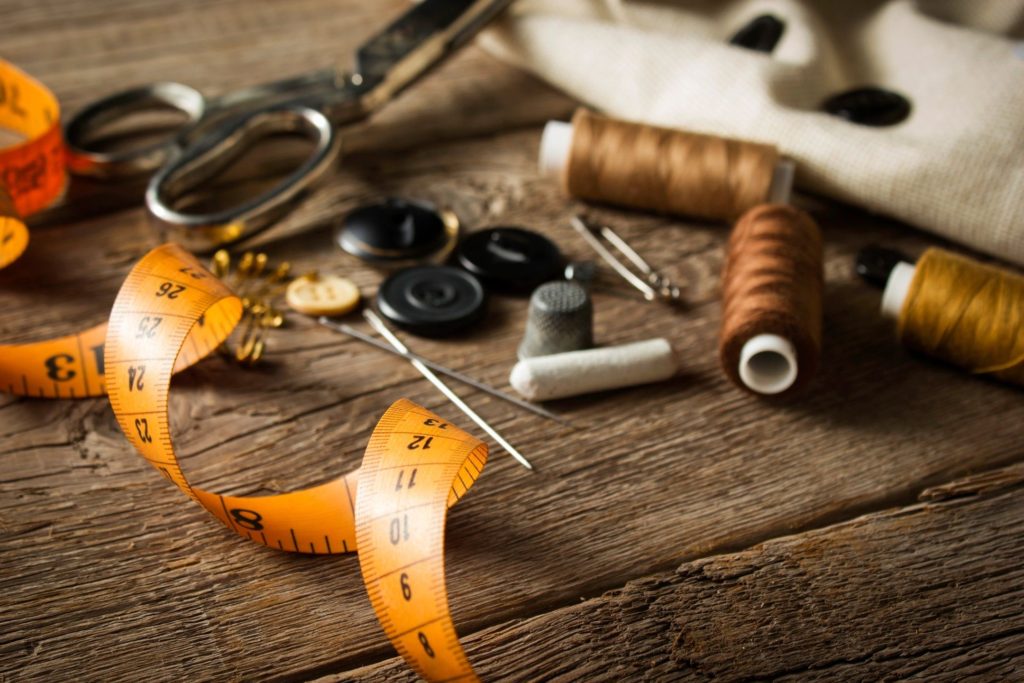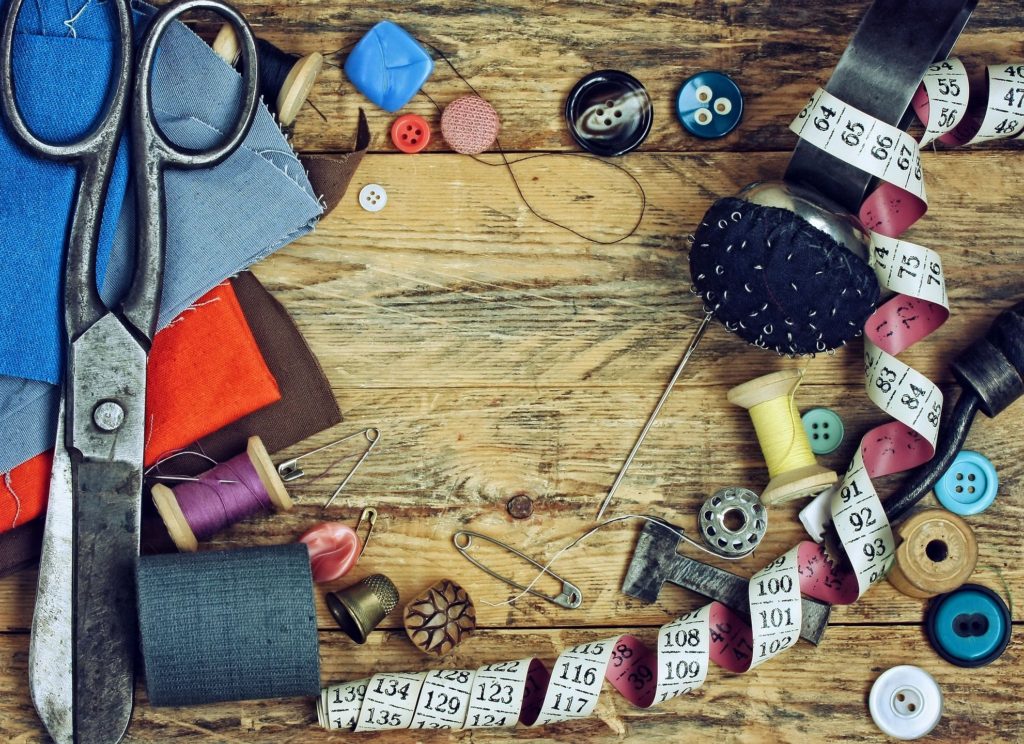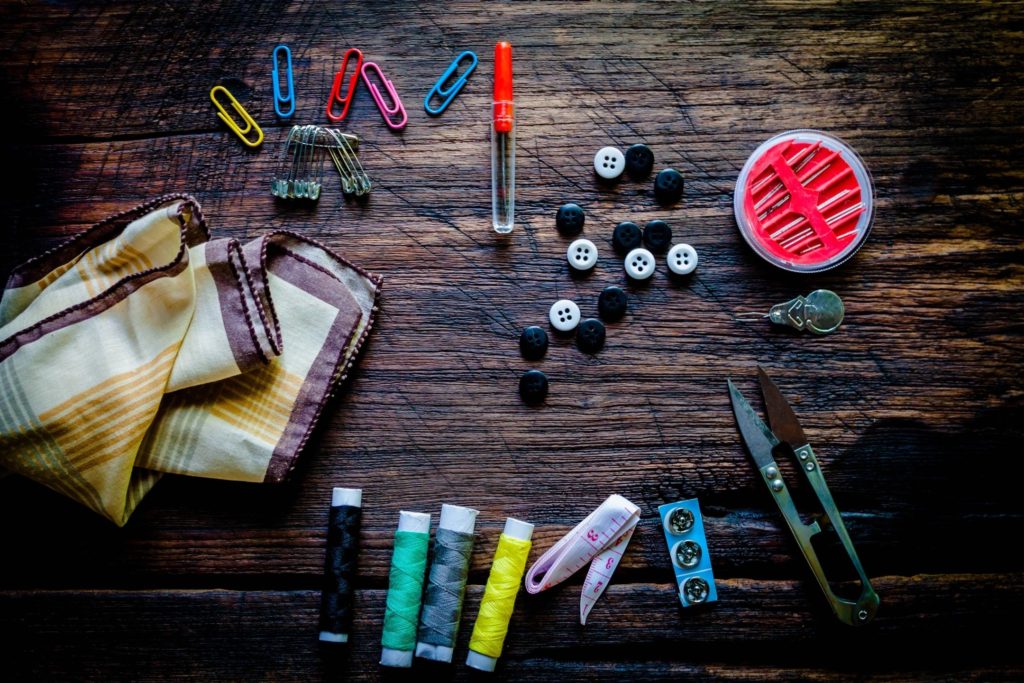Essential Sewing Tools for Dressmakers

To some people, dressmaking is a profession and some do it as their hobby. The professional dressmakers are generally called a seamstress, tailor, sewer, and alterations expert.
No matter what is your purpose of dressmaking – hobby or you are going to take it professionally you need to take the help of some essential sewing tools.
Among so many types of sewing tools, we have here classified the most essential sewing tools listed by Sew Kit Kit. This short but effective list will help you to pick up the right one for your work without wasting so much time.
Essential Sewing Tools to include into Sewer’s Toolbox
A sewer basically needs 4 types of sewing tools which include measuring tools, tracing tools, cutting tools, pinning and sewing tools.
Measuring Tools
- Hem Gauge
Hem gauge is 6-inch long measuring tool commonly used for hemming. They are also known as sewing gauge. To measure shot distances sewers use hem gauge.
- Hip Curve
To make dresses you have to measure the size of the hip, neck, arm etc. And, the hip curve is a perfect tool for measuring these distances.
- L-Square
Sometimes you may need to transfer measurements from the original pattern to the fabric you are going to sew and L-square is the measuring tool that will help you with this.
Tracing Tools
After measuring you need to trace the measured part to cut across it properly. Here is a short list of some common and cost-effective tracing tools:
- Tailor’s Chalk and Chalk Pencil
It is the most commonly used tracing tool of dressmakers. It is cheap and the marking can be easily brushed off after completing the work. The chalk pencil can become blunt after several usages and to make it sharp you can use a sharpener.
- Tracing Wheel
Some tracing wheels are serrated and some are smooth. You can use a tracing wheel to create designs and lines easily.
- Carbon Paper
To transfer any pattern or design from original fabric to the fabric you are working carbon paper is very convenient to use.
- Water Erasable Pencil
These are a white pencil to mark on the dark fabric and you can easily remove the mark with water.
- Marking Pens
You can also use marking pens for marking on the fabric. There are many types of marking pens are available and among them the most common include- vanishing marking pen, water erasable marking pen, and a permanent marking pen.
Cutting Tools

Now it is time to cut your fabric and you can use the following essential cutting tools to cut the fabric according to your measurement and design.
- Shear
Shears are cutting tool with a large blade that will cut across the fabric like butter. For easy and quick cutting every dressmaker includes this cutting tool in their toolbox.
- Pinking Shear
Shears with a zigzag edge are known as pinking shear. Reveling is a common problem every sewer face during sewing. A pinking shear can eliminate this raveling problem.
- Scissor
Scissors are very similar to shears but there is a little difference. Blade of the scissor is smaller than shears and they are used to cut patterns, stray threads, tapes and many more.
- Rotary Cutter
A rotary cutter is very sharp and handy fabric cutter that will let you cut thick fabric like faux, felt, fur and vinyl smoothly.
- Thread Snip
During making the dress you have to cut thread many times and a thread snip is a handy tool to cut thread.
- Seam Ripper
A mistake can happen at any time and even a skilled dressmaker can do mistakes. A seam ripper is a tool that will help you to correct your mistakes without damaging the fabric.
- Awl
Sometimes you may need to make a hole in the fabric and an awl is the cheaper and easy to use tool that will help you to make a hole.
Pinning and Sewing Tools

Now it is time to unite the cut piece of the fabric to make the dress and for this, you need the following essential sewing tools:
- Needles
Needles unite the cut fabric together when threaded. Whether you do hand sewing or machine sewing you need needles.
- Threads
Threads are also fundamental sewing materials. Matching with the color of your dress the color of thread is chosen. Different type of fabric requires a different type of threads. Depending on the quality of the fabric you have to choose the thread quality.
- Sewing Machine
To accelerate the progress of your sewing you must need a sewing machine. There are different types of sewing machine available in the market and they are different from one another with quality, price, working mechanism and so on.
Depending on your affordability and necessity choose one that will meet your need.
- Pin and Pin Cushion
Pins are used for tacking. The most common pin types are dressmaker pins, glass head pins, and T shaped pins.
Pincushions are used for arranging pins and prevent them from running around so that you can find them easily when you need.
- Thimble
You cannot do all types of sewing with a machine. Sometimes you may need to sew by hands. During hand sewing, a common problem is pinching. A thimble can protect your finger from getting pinched.
- Iron
It is very natural for the fabrics to be wrinkled before, during or after the sewing. You can solve this problem by using an iron.
Conclusion

We never can deny the necessity of using dress. So, you can take this as your profession without worrying. Dressmaking is a wonderful hobby also that makes you creative and helps to maintain good mental and physical health.
The enlisted essential sewing tools are considered as basic sewing tools that you just need to include your sewing toolkit to complete making a dress. Since different people need different tools according to their choice and needs we have kept some varieties so that you can easily find out the right one for you.
Tia, and TipsfromTia.com is trying to keep you looking good and
feeling good, from the inside out. If you’ve got a problem or a tip email me! Be sure to Like and share on Facebook or Follow on Twitter or Instagram.
